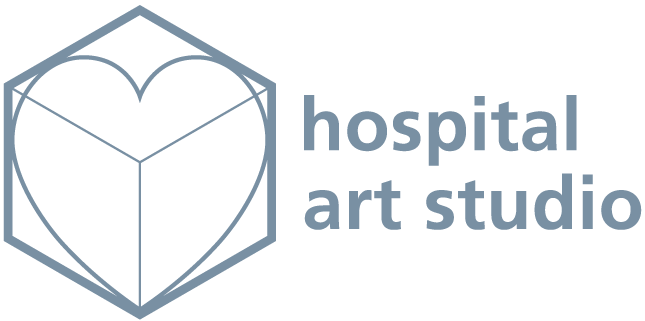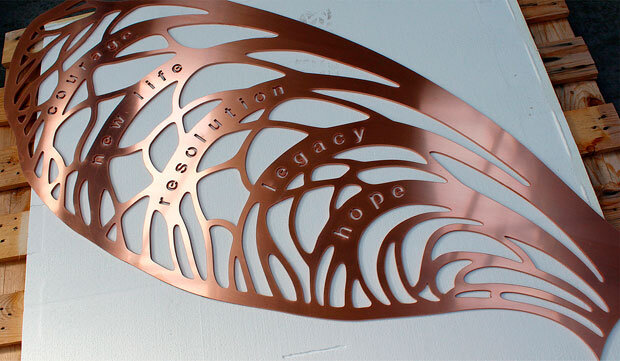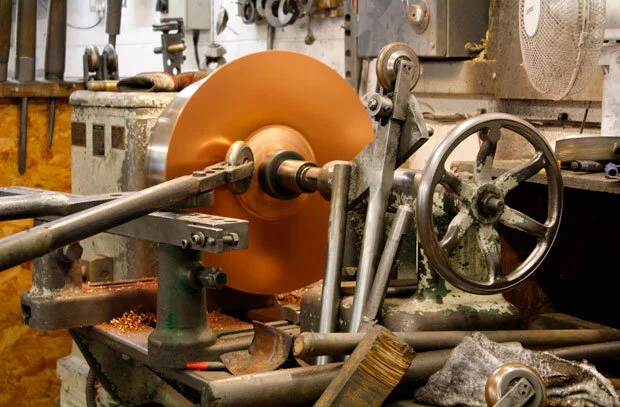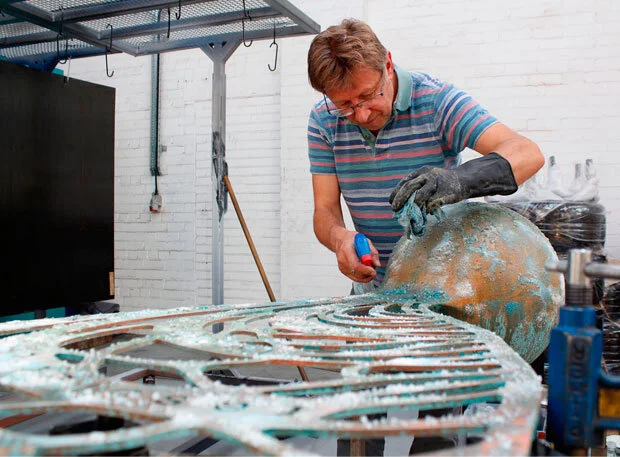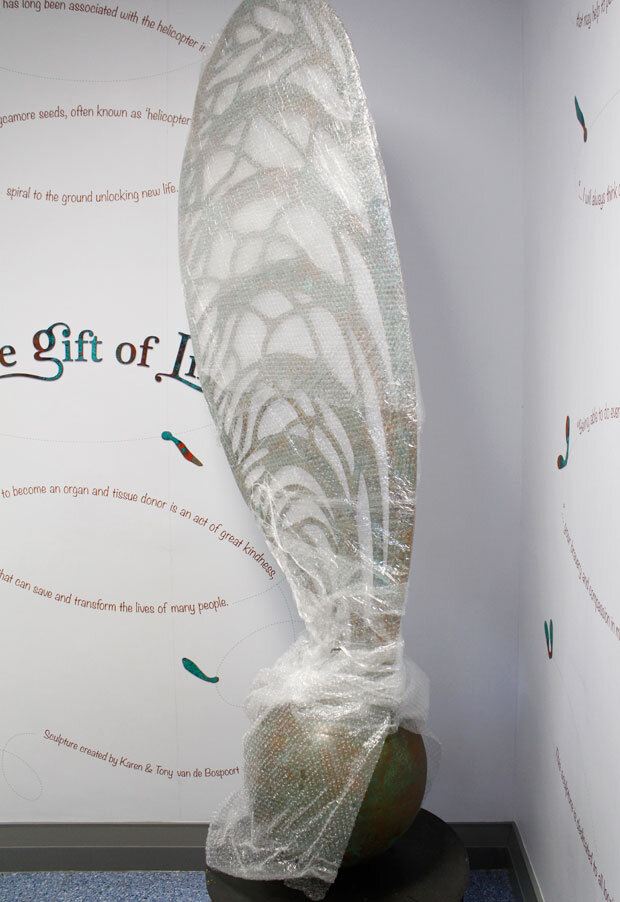Why a sycamore seed sculpture?
Thanks goes to Helen Rose, Specialist Nurse Organ Donation who commissioned us, and who immediately informed us about Yeovil’s long association with the helicopter industry. She was aware of how we utilise poignant and appropriate metaphors linked to nature to describe organ donation. Sycamore seeds are often known as helicopters because of the way they spiral down to earth, their movement similar to helicopter blades.
PRODUCTION – WATERJET CUTTING THE ‘BLADE’
The metal chosen to construct the seed was copper as this is known to naturally turn verdigris over many years. We commissioned and worked closely with a specialist waterjet cutters and metal fabricators to cut, weld and finish the 5mm thick copper seed, and the stainless steel plinth structure to our design.
SPINNING THE SEEDS
In order to create the 400mm diameter sphere at the base of the seed sculpture, two sheets of 5mm copper were first cut into circular shapes and then formed around a solid steel hemisphere in a highly skilled traditional process called spinning.
APPLYING THE VERDIGRIS
Verdigris is the natural patina formed when copper is weathered and exposed to air over time. But, this very beautiful finish can be attained sooner by the expert usage of particular chemicals.
INSTALLATION OF THE SCULPTURE
The first week of September is Organ Donation Week, where there are many events held in hospitals around the UK that primarily brings to attention the importance of organ donation. A number of families were invited to an unveiling event held in the Yeovil District Hospital at 3pm on Tuesday 3 September.
These families had all lost a loved family member and chose to selflessly donate their organs in order to bring a new life for others. The Clinical Lead for Organ Donation, Jo Tyrrell, gave an emotive speech at the official unveiling of the sculpture, followed by a further informative speech by Chief Executive, Jonathan Higman.
